Horse-Nettle
Poisonous if plant parts are consumed.
- Nightshade or potato Family (Solanaceae family):
- Solanum carolinense L.
- EPPO code:
- SOLCA
- Other names:
- Bull nettle, apple-of-sodom, wild tomato, devil’s tomato, devil’s potato, sand brier, sand burr
Species information
- Lifecycle:
- Perennial.
- Propagation:
- Horse-nettle reproduces by seed and spreading underground rhizomes.
- Emergence:
- Its shoots begin to emerge from the overwintering rhizomes around mid to late May. New plants germinate from seed that can lay dormant for several years beforehand.
- Habitat:
- Horse-nettle is found mainly in southwestern Ontario in cultivated fields, although herbarium records show that the species does grow in central and eastern Ontario.
- Competitiveness:
- Studies in field corn show little yield loss from the presence of horse-nettle, an indication that it is a poor competitor (Whaley and VanGessel, 2002; Prostko et al., 1994).
- Toxicity:
- Solanine, the poison found in horse-nettle, is at its highest levels in the fall. The consumption of berries presents the biggest risk of poisoning. Since the berries are the most palatable part of the plant they been attributed to illness and death of livestock and humans. Allowing the plant material and berries to dry down before feeding to livestock does not appear to reduce the risk of livestock poisoning. Fortunately, the sharp thorns on the stem deter many animals from consuming the plant.
Identification clues
Seedling
- Cotyledons:
- Oblong to elongated.
- First leaves:
- The first leaves of horse nettle have alternate orientation. The first two leaves are sparsely hairy on the upper leaf surface and have entire margins.
- Mature leaves:
- The plant’s mature leaves have alternate leaf orientation. Its leaves are broadest in the middle and taper on both ends. They also have 2–5 rounded or sharply pointed lobes on each side. Both surfaces are covered with fine, star-shaped hairs and several long, hard spikes that run along the leaf veins
Mature plant
- Stems:
- Horse-nettle’s stem is erect and branching near the top, and covered in tiny, star-shaped hairs and hard, sharp spines. It is green to purple in colour and grows up to 1 m in height.
- Flowers:
- Flowers grow in short clusters at the ends of branches. Each flower has five white or purple sepals that meet at a yellowish-orange centre made of joined stamens. The petals are 1.5–2 cm in diameter. Horse-nettle flowers from July until fall.
- Fruit:
- Immature fruit is dark green with light green stripes. Mature berries are smooth and yellow, and will wrinkle with age.
- Roots:
- Fibrous, attached to an extensive rhizome network.
Helpful tip
Horse-nettle is distinguished by its spiny/thorny stems and leaves, its large white to purple flowers, its smooth yellow berries, and its rhizomes, which allow it to grow in thick patches.
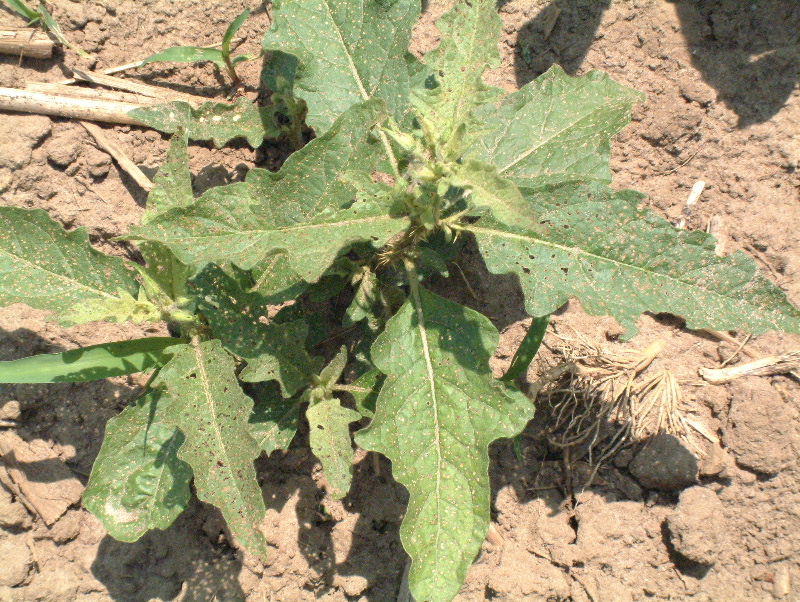
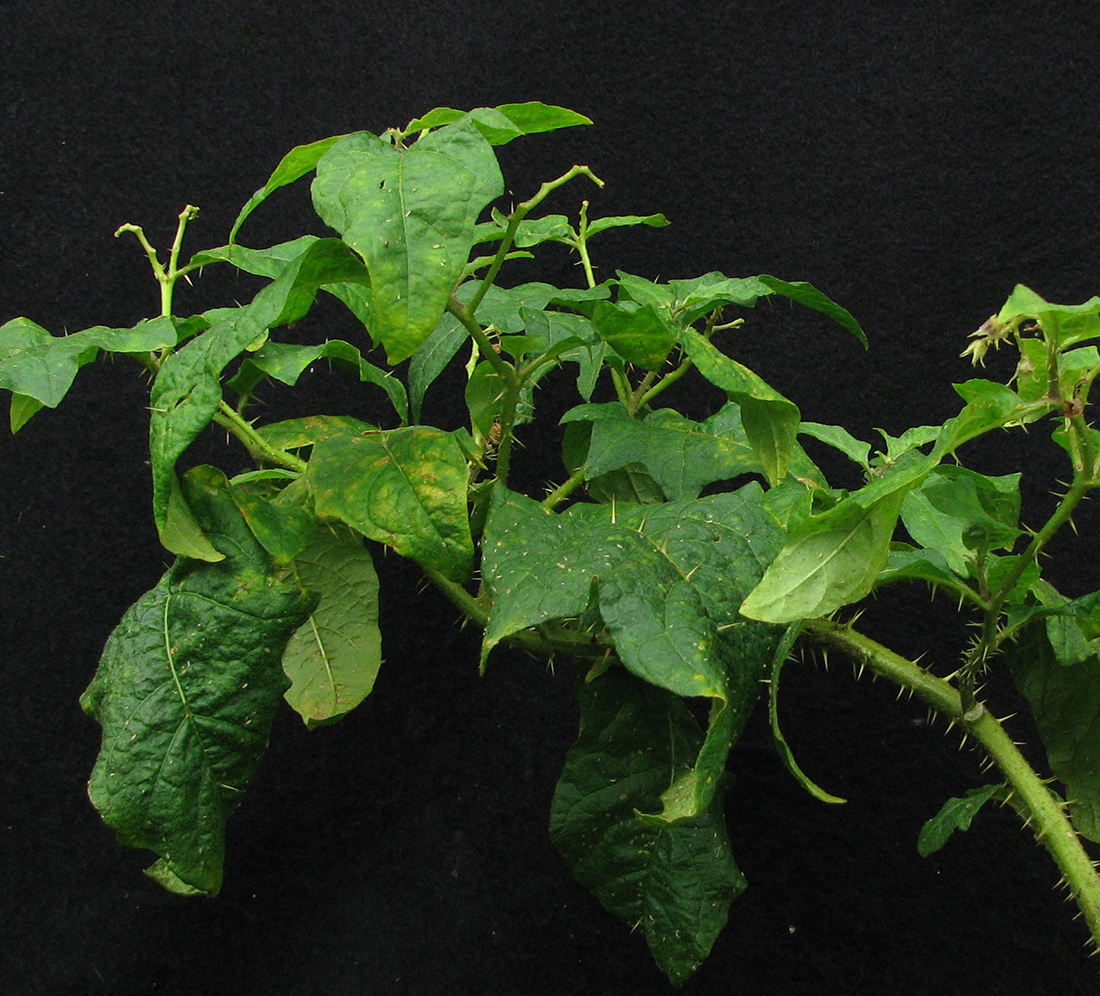
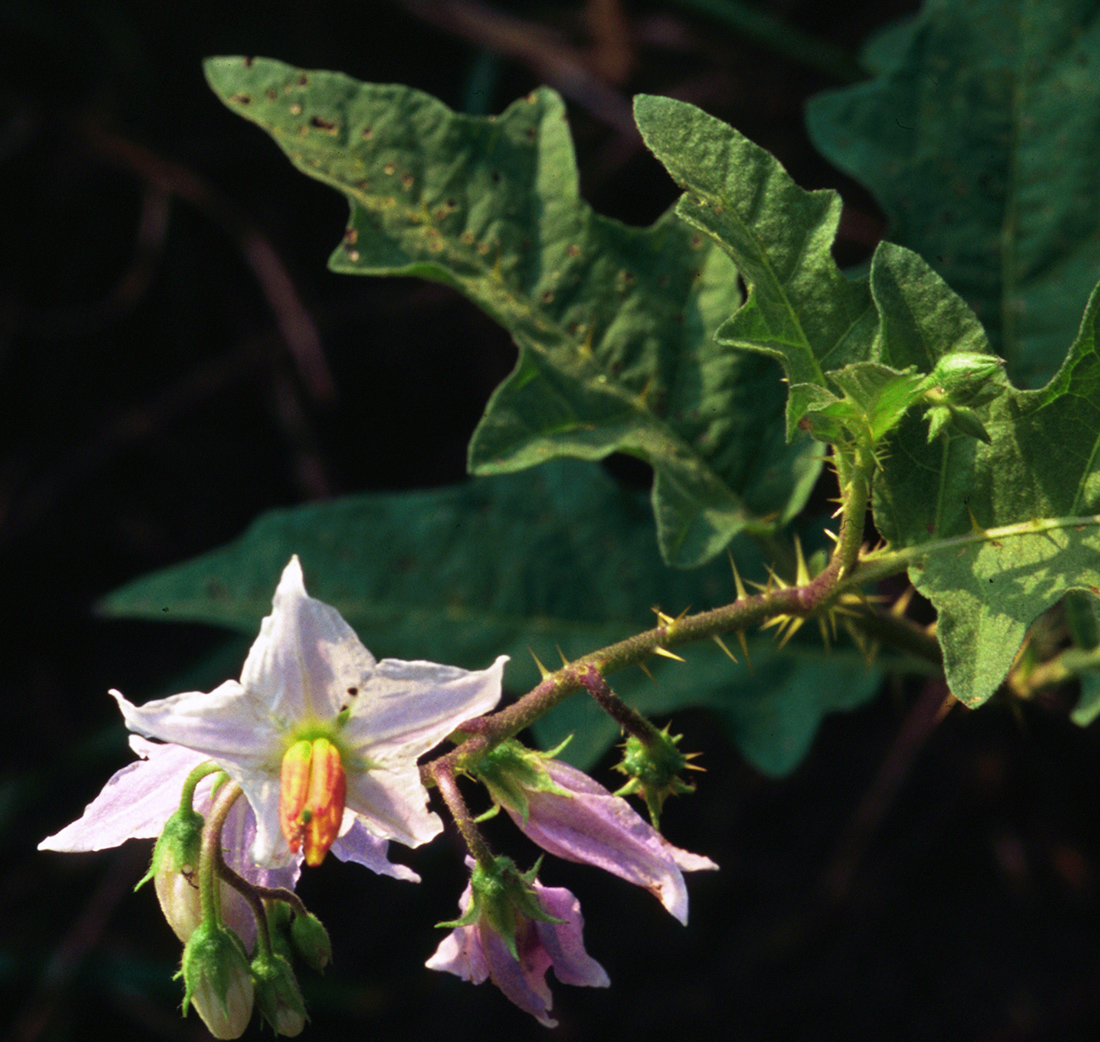
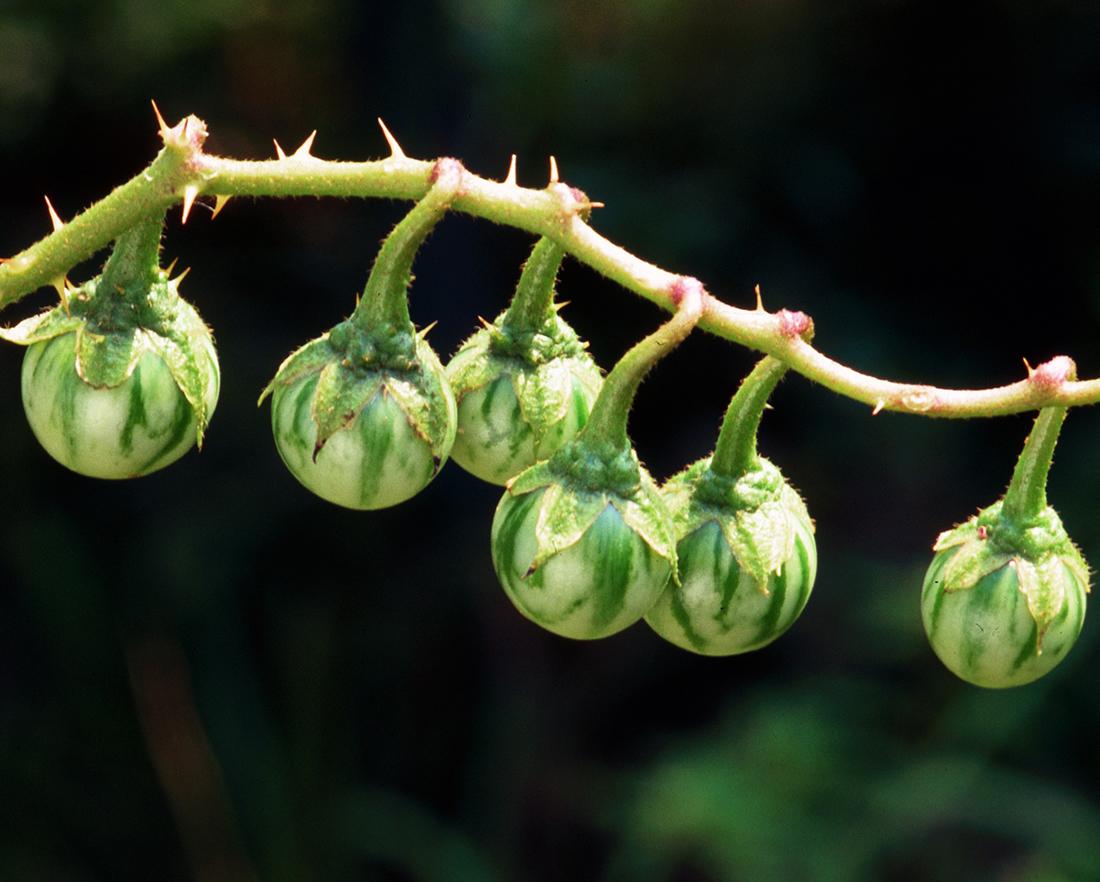
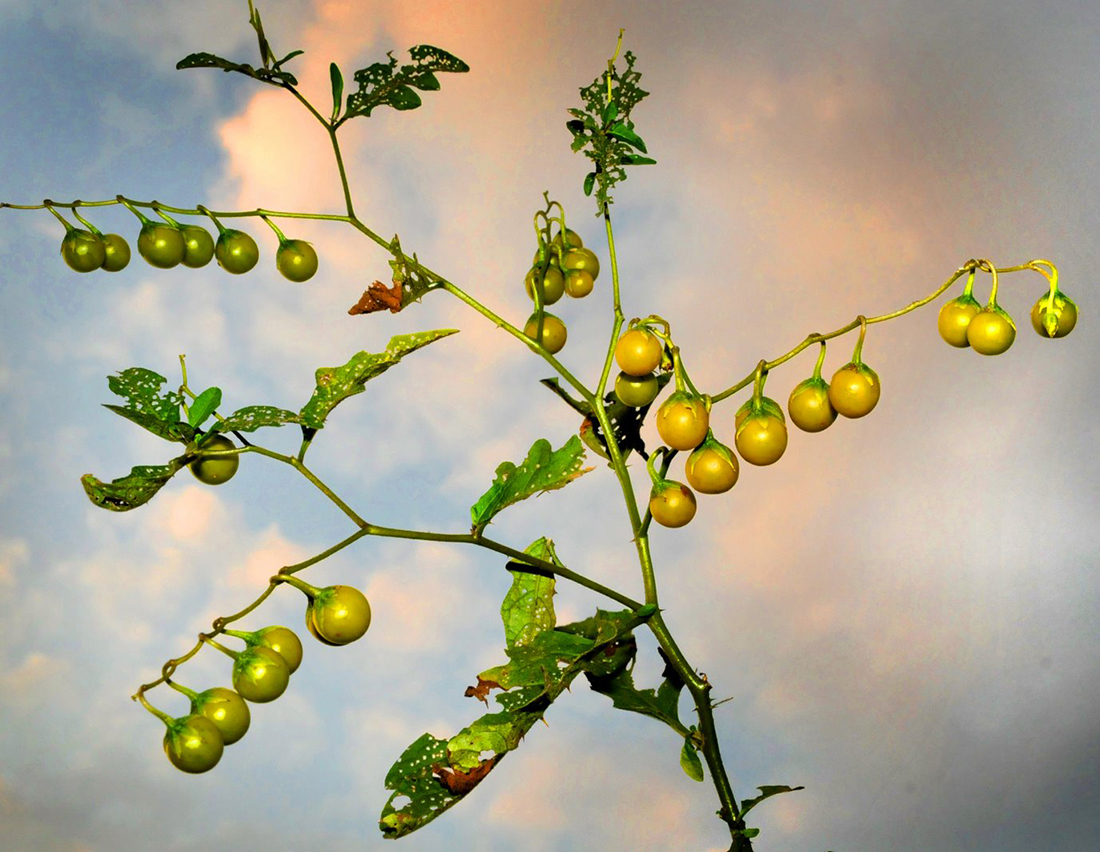
Updated: January 13, 2023
Published: January 13, 2023